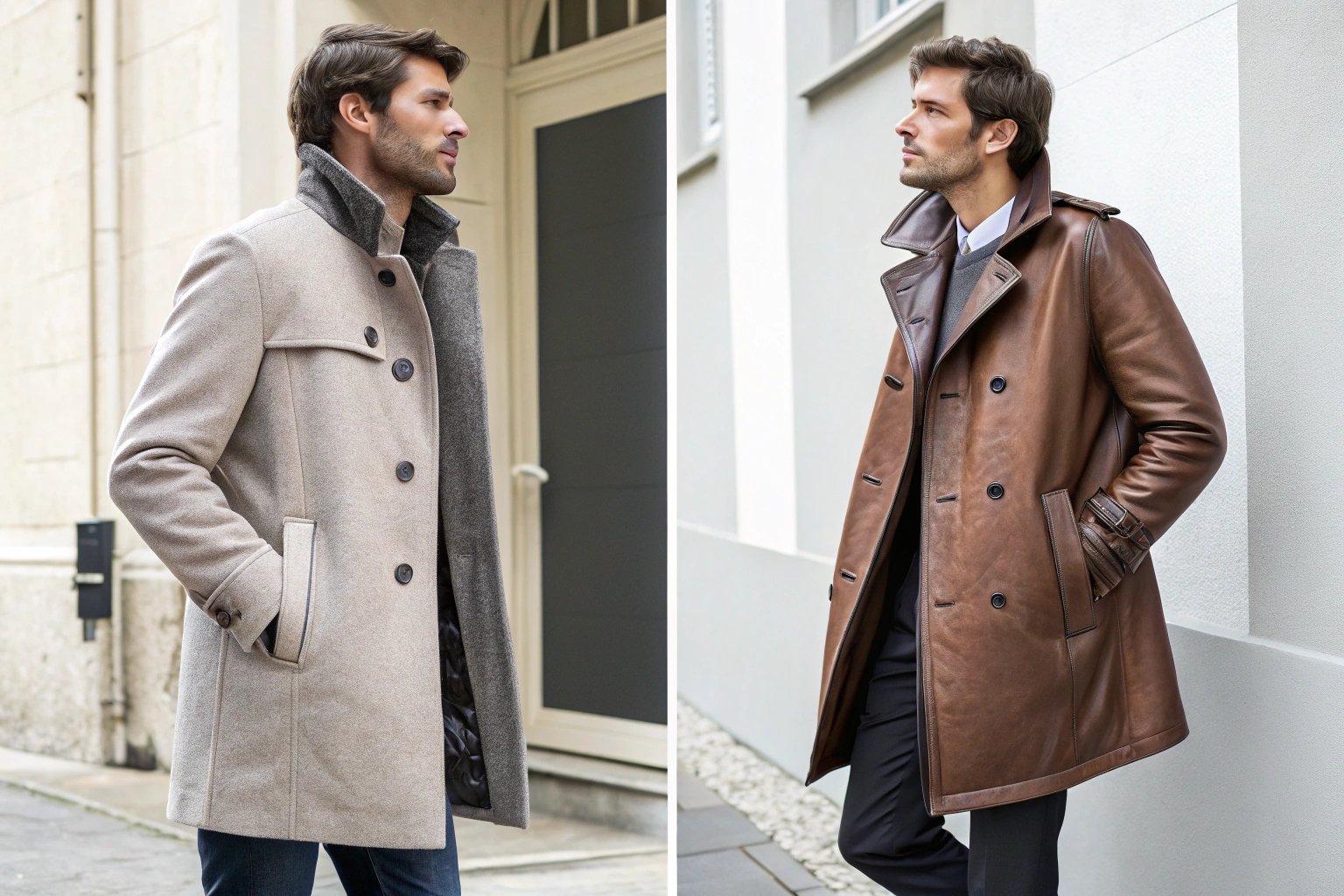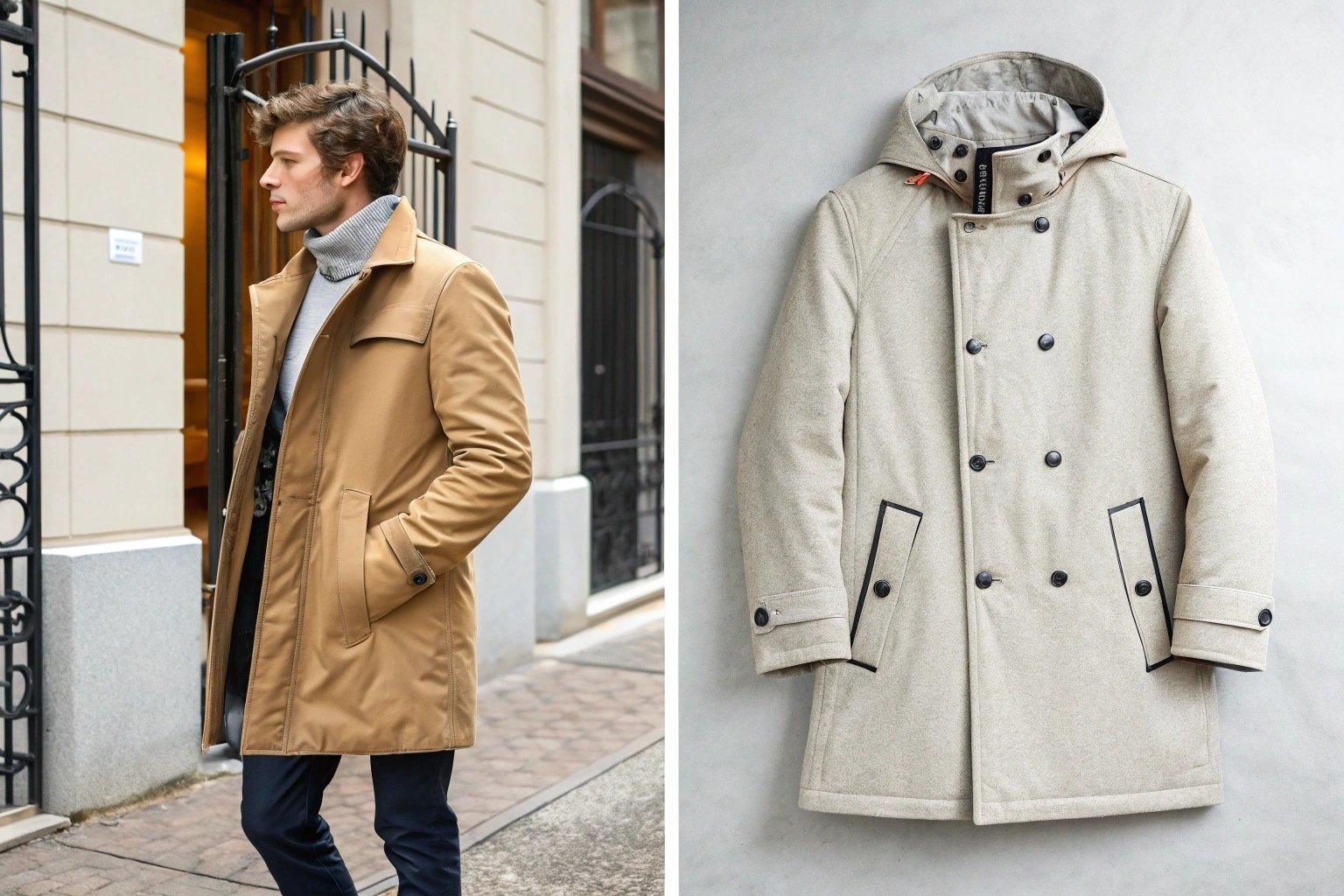In the fashion industry, understanding the difference between a coat and a jacket is crucial. These two types of outerwear may seem similar, but they serve distinct purposes. Whether you’re designing for fashion or simply looking to upgrade your wardrobe, knowing how these garments differ is essential. This knowledge not only guides purchasing decisions but can also shape how products are developed and marketed.

Coats and jackets vary in style, function, and fabric. While jackets are often lighter and shorter, coats provide more warmth and cover. However, choosing the right garment is not just about warmth but also about craftsmanship, fabric choice, and brand positioning. Let’s explore these distinctions, along with the factors that clients care about, such as craftsmanship, fabric quality, and durability.
Is There a Difference Between a Jacket and a Coat?

The key difference between a jacket and a coat comes down to length, warmth, and purpose. A jacket is typically waist-length or slightly longer, and it is made of lighter materials for everyday wear. It provides moderate protection from cool weather and is often more versatile for layering.
On the other hand, a coat is generally much longer, often extending to the knees or even the ankles. Coats are designed for colder conditions, offering more insulation through thicker fabrics like wool, down, or cashmere. They are typically worn in colder climates, offering protection against winter’s harsh elements.
The distinction in craftsmanship is another important factor. Coats are often made with more detailed construction, with emphasis on quality stitching, lining, and durable fabric to withstand freezing temperatures. Jackets, especially lightweight varieties, are often made with simpler designs and thinner materials.
Do You Say Coat or Jacket?
Choosing between "coat" or "jacket" is not always straightforward, as it depends on context:
-
Coat: Refers to a longer, insulated garment typically worn for formal or colder settings. Coats are often made from luxurious materials, with a higher level of craftsmanship. They can feature finer details like quality linings, intricate buttons, and higher-end finishes.
-
Jacket: A jacket is a shorter outerwear piece that can be more versatile in casual or business-casual settings. Jackets tend to be made from lighter, more breathable materials that suit moderate climates. From a design perspective, jackets are often produced with a wider range of fabrics, colors, and styles to cater to different fashion trends.
The term "jacket" can be used for lighter outerwear, like denim jackets, bomber jackets, or blazers, while "coat" refers to more formal and insulated pieces, such as peacoats, trench coats, or overcoats.
Can You Call a Coat a Jacket?
It’s important to respect the craftsmanship and design distinctions between a coat and a jacket. While you can technically refer to some coats as jackets (especially in casual language), it’s best not to confuse the two in terms of quality and material differences.
A peacoat or trench coat is often referred to as a "coat" because of its length and structure, even though it may share some styling elements with jackets. However, calling a traditional winter coat or overcoat a jacket would mislead customers and fail to emphasize its protective qualities or luxurious construction.
In terms of marketing and product development, brands must ensure they properly label these garments to help customers make informed decisions. Mislabeling could affect the perceived value and quality of the product, especially in high-end lines.
What Is Warmer, a Jacket or a Coat?
When comparing warmth, coats are typically far warmer than jackets. Coats are made from heavier materials, like wool, down, or cashmere, and are designed to provide insulation against cold climates. These fabrics are selected for their durability and warmth, ensuring the wearer is protected in freezing temperatures.
On the other hand, jackets are often made from lighter, more breathable materials. While jackets can offer some warmth—especially insulated puffer jackets—they generally don’t provide the same level of warmth as a coat. Jackets are more suited for mild to moderate weather, where protection from wind and light rain is more important than combating snowstorms or freezing temperatures.
The craftsmanship of a coat focuses on heavy-duty construction, such as double stitching, durable zippers, and sometimes waterproof coatings for added functionality. Jackets may have simpler finishes but can still be highly stylish, offering a more breathable construction for better flexibility.
Craftsmanship and Fabric Choice: Why They Matter to Customers
Clients in the fashion industry, especially those creating high-quality or performance-oriented outerwear, often focus on craftsmanship and fabric choice. Here’s why these factors are so crucial:
-
Material Selection: When designing a coat or jacket, fabric choice is key to determining the garment’s insulation, comfort, and durability. For coats, premium fabrics like wool, cashmere, or high-quality down are often used to ensure warmth and longevity. Jackets may use more versatile materials like denim, leather, or synthetic fabrics for added flexibility.
-
Craftsmanship: High-quality coats often feature attention to detail, such as hand-stitched seams, reinforced lining, and premium finishes like brass buttons or luxury zippers. This level of craftsmanship helps create a garment that not only looks good but also stands up to wear and tear over time. Jackets may offer some of these details but often focus more on practicality and styling.
-
Sustainability: As sustainability becomes increasingly important, many consumers are seeking out eco-friendly coats and jackets made from organic or recycled fabrics. Using sustainable materials like recycled wool or eco-friendly down can give your product a competitive edge, especially in a market that values both quality and environmental responsibility.
Brands that focus on high-quality construction and premium fabrics can elevate their reputation and appeal to customers who care about longevity and luxury. For example, incorporating water-resistant coatings in jackets or offering coats with removable liners for versatile styling can make your products more adaptable to various climates.
Functionality and Brand Strategy in Outerwear
Understanding the different needs of customers based on geography, climate, and lifestyle can help you create products that speak to specific target audiences. For instance, customers in colder regions may prioritize coats with added insulation and weather-resistant fabrics, while those in milder climates may prefer jackets that offer a stylish and practical solution for transitional weather.
-
Functionality: Jackets may be used for daily, versatile wear, while coats are perfect for winter protection or formal occasions. Jackets designed with removable hoods, adjustable cuffs, or multi-pocket options can cater to practical needs. Coats, on the other hand, can be designed with more formal elements like classic cuts, premium linings, and tailored fits.
-
Brand Positioning: Coats are often linked to luxury brands, offering high-end materials and timeless designs. Jackets, especially lightweight options, can be positioned as trendy, casual pieces for young consumers looking for fashion-forward outerwear.
Offering a range of jackets and coats allows you to diversify your product line and meet the needs of customers across different regions and climates, ensuring that your brand remains competitive in a variety of markets.
Conclusion
Coats and jackets are both essential wardrobe pieces, but they each serve different functions based on climate, occasion, and personal style. Coats are ideal for winter or formal settings, providing warmth, protection, and elegance. Jackets offer versatility and lighter protection for milder weather. Understanding the distinctions between the two will help you make more informed choices, whether you’re shopping or designing products.
As a designer, focusing on craftsmanship and the quality of materials used in both jackets and coats will allow you to cater to a variety of customer needs, ensuring your brand offers the right products for any occasion or climate.

